In the world of culinary delights, herbs play a vital role in enhancing flavors and aromas.
The use of fresh herbs can elevate a dish from ordinary to extraordinary, adding a burst of freshness and depth to your cooking. Not only do herbs bring a vibrant touch to your meals, but they also offer numerous health benefits.
Growing herbs at home is an excellent way to ensure a steady supply of these flavorful and nutritious ingredients.
In this article Growing Delicious and Nutritious Herbs at Home: A Comprehensive Guide, we will explore the world of herbs, including their ease of cultivation, common culinary uses, and the health benefits they provide.
Benefits of Growing Herbs at Home
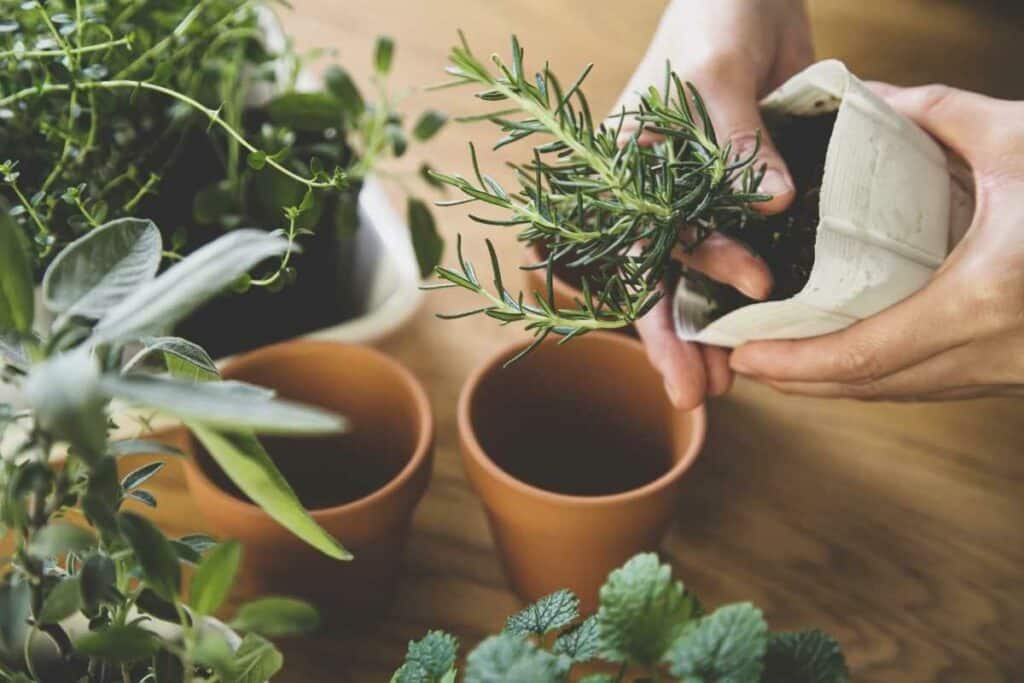
Growing herbs at home offers a range of benefits that go beyond convenience.
By cultivating your own herb garden, you can enjoy the following advantages:
- Freshness: Homegrown herbs provide unmatched freshness compared to store-bought varieties. You can pluck them straight from your garden and use them immediately, capturing the maximum flavor and aroma.
- Cost-Effectiveness: Purchasing fresh herbs from the grocery store can be expensive, especially if you require them frequently. Growing your own herbs allows you to save money.
Brief Description of The Top 15 Herbs
- Basil
- Chives
- Cilantro
- Dill
- Mint
- Oregano
- Parsley
- Rosemary
- Sage
- Thyme
- Lavender
- Lemongrass
- Marjoram
- Tarragon
- Stevia
Basil
Basil is an annual herb that is commonly cultivated for its aromatic leaves, although there are various decorative and flavorful cultivars available.
The most common variety is “sweet basil,” which produces large, tender, and savory leaves. It is an excellent choice for beginners in herb gardening and thrives in warm weather. As the plant matures, it develops into a bushy plant with multiple stems, reaching a height of one foot or more.
Basil is frost-tender and can be grown as an annual in zones 2-11, while it can be cultivated as a perennial in zones 10 and above. It prefers rich, well-drained soil and requires regular watering.
Chives
Chives are a perennial herb with long, slender leaves and a mild onion-like flavor. They belong to the same family as garlic, onions, and leeks.
Chives are known for their slender, hollow green leaves, which are commonly used as a garnish or chopped and added to various dishes for their delicate onion flavor. They are easy to grow and can thrive in various climates and soil conditions.
Chives can be planted in both containers and gardens, and they prefer well-drained soil and full sun exposure. Regular harvesting helps promote continuous growth, and the flowers that bloom in summer are also edible and have a milder onion taste.
Cilantro
Cilantro, also known as coriander leaf, Chinese parsley, or Mexican parsley, is a herb with delicate, lacy leaves and a distinctive flavor. It is commonly used in various cuisines, especially in Mexican, Indian, and Southeast Asian dishes.
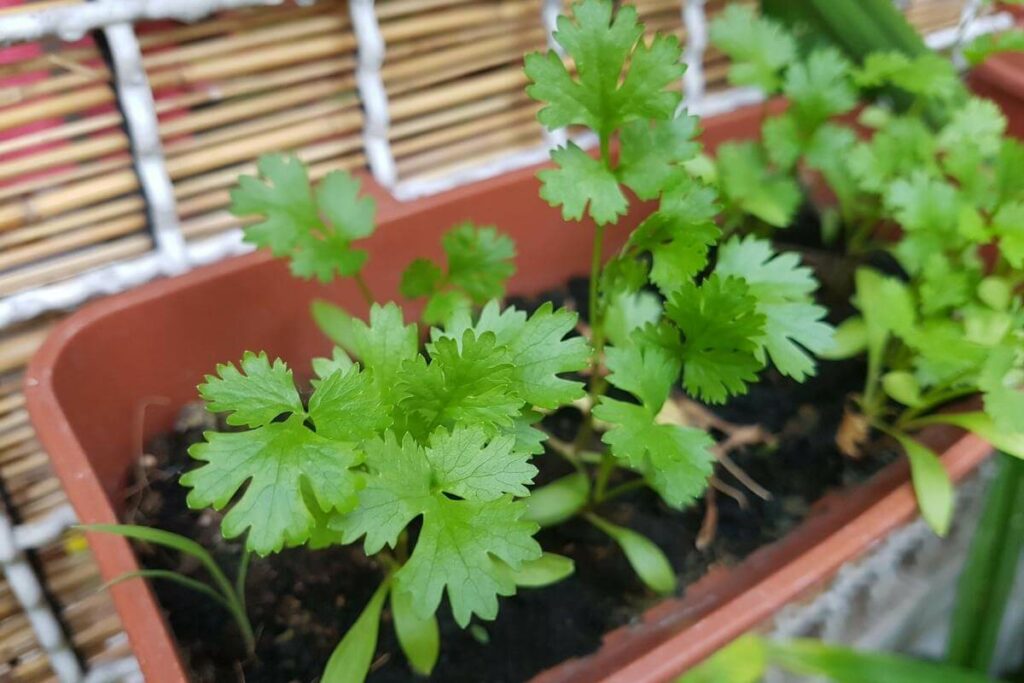
Cilantro has a refreshing and citrusy taste, often described as a mix of parsley and citrus. It is an annual herb that grows best in cooler weather and prefers well-drained soil.
Cilantro can be planted directly in the garden or in containers, and regular harvesting of the leaves promotes continued growth. The seeds of the cilantro plant are known as coriander and have a slightly different flavor compared to the leaves.
Dill
Dill is an aromatic herb with feathery leaves and a unique flavor that is often associated with pickles. It is an annual herb that grows best in full sun and well-drained soil. Dill can reach a height of 2-4 feet and produces small yellow flowers.
The leaves and seeds of the dill plant are both used in cooking. The leaves have a mild, grassy flavor, while the seeds have a stronger taste.
Dill is commonly used to flavor fish, salads, and sauces and can be added to pickling recipes to enhance the flavor. Regular harvesting of the leaves promotes continued growth, and the flowers of the dill plant attract beneficial insects to the garden.
Mint
Mint is a perennial herb known for its refreshing aroma and cooling taste. It is a versatile herb used in various culinary applications, such as teas, desserts, cocktails, and savory dishes.
There are different varieties of mint, including spearmint and peppermint, each with its own distinct flavor. Mint is a vigorous grower and can spread quickly, so it is often recommended to grow it in containers to control its growth.

It prefers moist soil and partial sunlight but can tolerate some shade. Mint is often planted separately from other herbs due to its invasive nature. However, according to some sources, it can be grown alongside moisture-loving herbs like basil and parsley.
Oregano
Oregano is a perennial herb that is widely used in Mediterranean and Italian cuisine. It has a robust flavor profile with hints of bitterness and a pungent aroma.
Oregano is commonly used in tomato-based dishes, pasta sauces, pizzas, and grilled meats. It is a hardy herb that thrives in warm climates and can tolerate dry conditions. Oregano prefers well-drained soil and full sun exposure.
In Mediterranean herb gardens, oregano is often planted together with other herbs like rosemary, sage, marjoram, lavender, and thyme, as they complement each other in terms of flavor and growing conditions.
Parsley
Parsley is a versatile herb widely used in cooking as a garnish, flavoring agent, and ingredient in sauces and salads. It is a biennial herb, but it is usually grown as an annual.
There are two main types of parsley: curly parsley and flat-leaf (Italian) parsley. Curly parsley is often used as a decorative element, while flat-leaf parsley has a stronger flavor.
Parsley prefers well-drained soil and full sun to partial shade. It is a popular choice for companion planting and can be grown alongside herbs like basil, cilantro, and tarragon.
Rosemary
Rosemary is an aromatic evergreen herb with needle-like leaves and a distinctive pine-like fragrance. It is a perennial herb that grows well in warm and sunny climates.
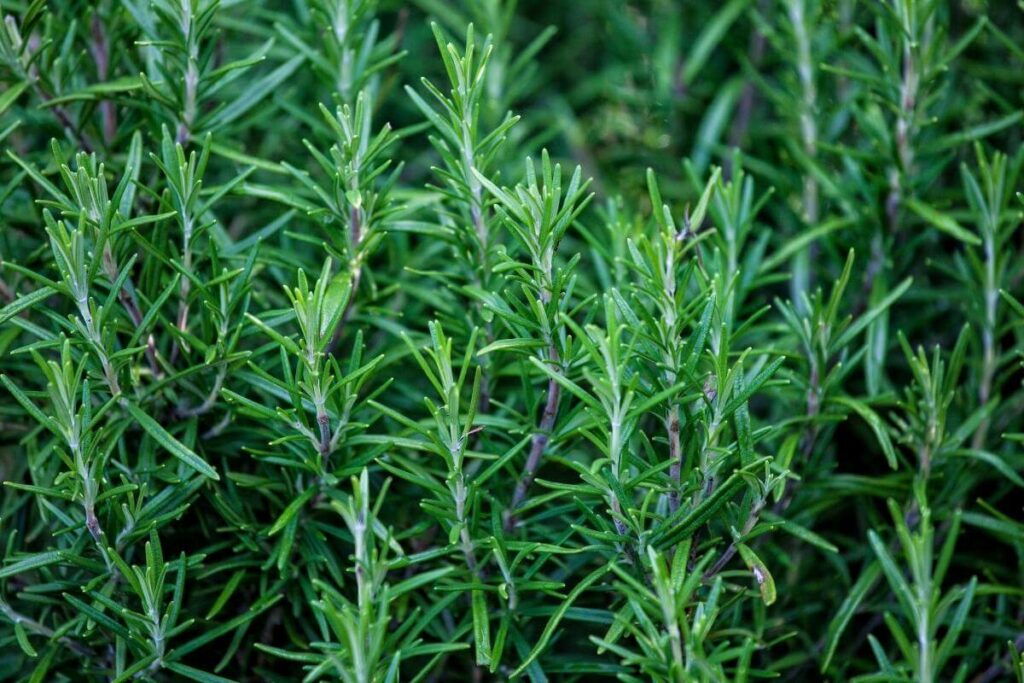
Rosemary is known for its strong flavor, and its leaves are commonly used in Mediterranean cuisine, roasted meats, potatoes, and bread. Rosemary pairs well with other herbs such as oregano, sage, marjoram, lavender, and thyme, and they can be planted together in herb gardens.
Sage
Sage is a perennial herb with soft, gray-green leaves and a strong earthy flavor. It is commonly used in stuffing, roasted meats, sausages, and savory dishes.
Sage prefers well-drained soil and full sun exposure. In herb gardens, sage is often planted alongside herbs like rosemary, marjoram, oregano, lavender, and thyme, as they complement each other in terms of flavor and growing conditions.
Thyme
Thyme is a perennial herb with small, aromatic leaves and a subtle, earthy flavor. It is commonly used in Mediterranean cuisine, soups, stews, marinades, and roasted vegetables. Thyme thrives in well-drained soil and requires full sun exposure to grow optimally.
When it comes to companion planting, thyme is often planted together with other herbs such as sage, rosemary, marjoram, lavender, and oregano. This combination of herbs not only complements each other in terms of flavor but also shares similar growing conditions.
Lavender
Lavender is a beautiful and fragrant herb known for its calming scent and delicate purple flowers. It is a perennial herb that thrives in well-drained soil and full sun.
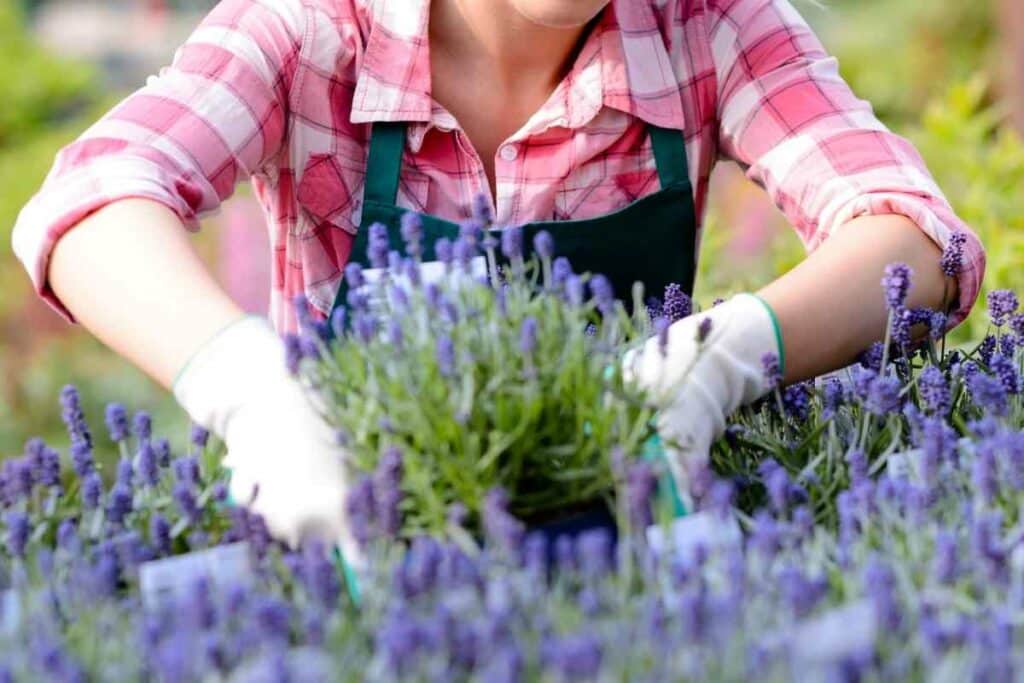
Lavender is commonly used in culinary applications, as well as for its aromatic and medicinal properties. In herb gardens, lavender is often planted alongside other herbs such as sage, thyme, rosemary, marjoram, and oregano, creating a visually appealing and aromatic garden space.
Lemongrass
Lemongrass is a tropical herb known for its citrusy aroma and flavor. It is commonly used in Asian cuisine, teas, and herbal infusions.
Lemongrass is a perennial herb that prefers warm climates and well-drained soil. It requires ample sunlight to grow successfully. Due to its specific growing requirements, lemograss is often planted separately from other herbs, as it may not thrive in the same conditions as most common culinary herbs.
Marjoram
Marjoram is a perennial herb with a mild, sweet flavor reminiscent of oregano. It is commonly used in Mediterranean cuisine, soups, stews, and meat dishes.
Marjoram prefers well-drained soil and full sun to partial shade. It is often planted together with other herbs such as thyme, rosemary, sage, lavender, and oregano, as they share similar growing conditions and can complement each other in recipes.
Tarragon
Tarragon is a perennial herb known for its distinct anise-like flavor. It is commonly used in French cuisine, particularly in sauces, dressings, and seafood dishes.
Tarragon prefers well-drained soil and full sun to partial shade. It can be grown together with other herbs like basil, cilantro, and parsley, as they have similar growing requirements and can be complementary in culinary preparations.
Stevia
Stevia is also perennial herb that is known for its natural sweetness. It is commonly used as a sugar substitute in beverages, desserts, and other sweet dishes.
Stevia requires well-drained soil and full sun to grow properly. Due to its specific growing requirements and its role as a sweetener rather than a culinary herb, stevia is typically planted separately from other herbs.
Why Grow Herbs at Home?
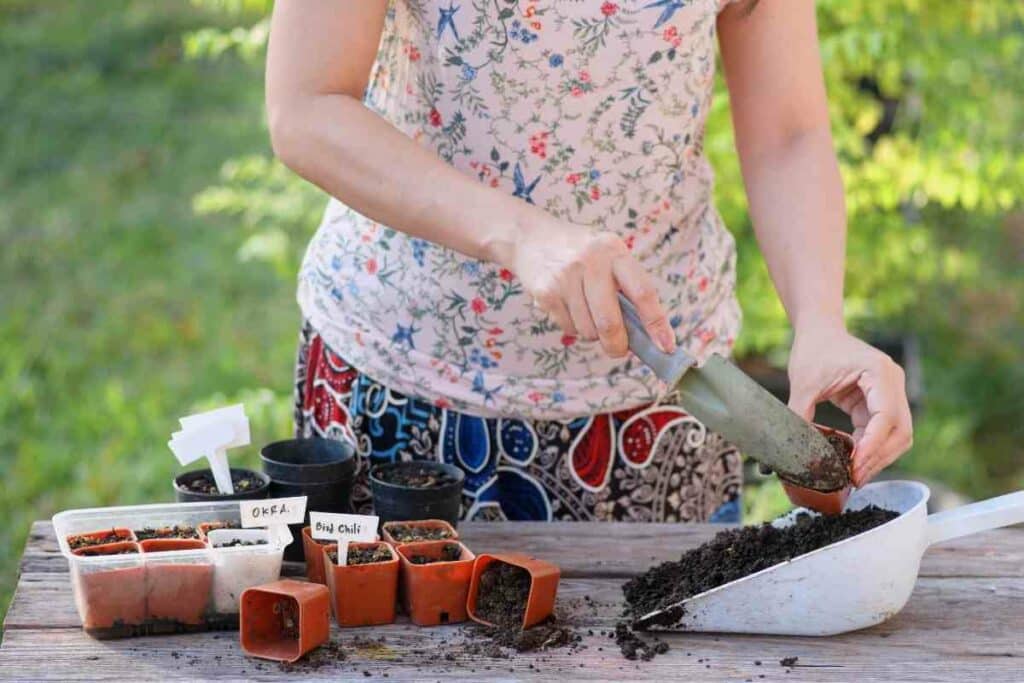
Growing herbs at home can be a rewarding and practical endeavor for several reasons. Whether you have a spacious garden or limited space, cultivating herbs offers numerous benefits.
Here are 5 reasons why you should consider growing herbs at home:
- Fresh Flavor and Aromas: Herbs are renowned for their vibrant flavors and aromas. By growing your own herbs, you can enjoy the freshest ingredients to enhance the taste of your culinary creations. Adding freshly harvested herbs to your dishes can elevate the flavors to new heights.
- Cost-Effective: Buying fresh herbs from the grocery store can be expensive, especially if you frequently use them in your cooking. Growing herbs at home allows you to save money in the long run. You can harvest herbs whenever you need them, ensuring a steady supply without additional costs.
- Convenience and Accessibility: Having a herb garden at home provides convenient access to a wide variety of herbs. Instead of rushing to the store every time you need a specific herb, you can simply step outside and harvest the required amount. This convenience allows you to experiment with different herbs and flavors in your cooking.
- Health Benefits: Many herbs possess health-promoting properties. By incorporating fresh herbs into your diet, you can enhance the nutritional value of your meals. Additionally, some herbs are believed to have medicinal properties and can be used for herbal remedies or teas.
- Educational and Therapeutic Value: Growing herbs at home is an excellent way to learn about plants, gardening, and nature. It can be a fulfilling and educational experience, especially for children. Gardening has also been shown to have therapeutic benefits, reducing stress and promoting well-being.
Herbs Suitable for Home Gardening
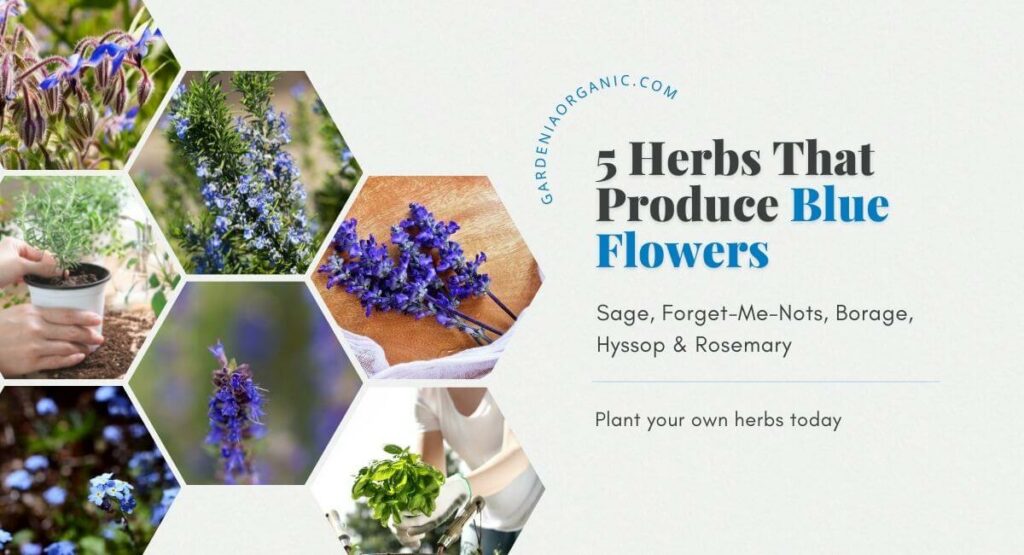
- Basil: Basil is a versatile herb with a sweet and slightly peppery flavor. It requires ample sunlight, well-drained soil, and regular watering. Basil is commonly used in Italian and Southeast Asian cuisines, perfect for pasta sauces, pesto, and salads.
- Mint: Mint is known for its refreshing aroma and cool taste. It thrives in partial shade and moist soil. Mint leaves are commonly used in beverages like mojitos, teas, and infused water. They also add a delightful twist to desserts and savory dishes.
- Rosemary: Rosemary has a fragrant, pine-like aroma and a slightly bitter taste. It prefers full sun, well-drained soil, and moderate watering. Rosemary is often used in Mediterranean dishes, roasted meats, vegetables, and bread.
- Thyme: Thyme offers a warm, earthy flavor and a subtle minty aroma. It thrives in well-drained soil, full sun, and moderate watering. Thyme is commonly used in stews, soups, marinades, and roasted vegetables.
- Curry Leaves: Curry leaves have a distinct, aromatic flavor commonly used in Indian cuisine. They require a warm and sunny location. These leaves are added to curries, rice dishes, chutneys, and lentil soups to impart a unique taste.
- Oregano: Oregano has a strong, pungent flavor reminiscent of Mediterranean cuisine. It prefers well-drained soil, full sun, and moderate watering. Oregano is an essential ingredient in Italian dishes, pizzas, pasta sauces, and grilled meats.
- Parsley: Parsley has a fresh, slightly peppery taste and is commonly used as a garnish or ingredient in various dishes. It grows best in well-drained soil and partial shade. Parsley adds flavor to salads, sauces, soups, and marinades.
- Ginger: Ginger adds a warm, spicy flavor to both sweet and savory dishes. It requires well-drained soil, partial shade, and regular watering. Ginger is widely used in Asian cuisine, stir-fries, curries, and baked goods.
- Chilli: Chilli peppers come in various heat levels and add fiery flavor to dishes. They need full sun, well-drained soil, and regular watering. Chillies are used in salsas, sauces, stir-fries, and spicy dishes from around the world.
- Coriander: Coriander, also known as cilantro, has a distinct flavor loved by many. It prefers well-drained soil, partial shade, and regular watering. Coriander leaves are used in Mexican, Indian, and Southeast Asian cuisines, while the seeds are used as a spice in various dishes.
- Sage: Sage has a strong, earthy flavor with hints of mint and citrus. It thrives in full sun, well-drained soil, and moderate watering. Sage is often used in stuffing, roasted meats, sausages, and sauces.
- Dill: Dill has a delicate, feathery foliage with a fresh and tangy flavor. It prefers full sun, well-drained soil, and regular watering. Dill is commonly used in pickles, salads, fish dishes, and sauces.
- Cilantro: Cilantro has a pungent, citrusy flavor and is widely used in Latin American and Asian cuisines. It requires well-drained soil, partial shade, and regular watering. Cilantro leaves are used in salsas, guacamole, curries, and salads.
- Lemongrass: Lemongrass offers a refreshing, lemony flavor and fragrance. It needs full sun, well-drained soil, and regular watering. Lemongrass is commonly used in Thai, Vietnamese, and Caribbean dishes, as well as teas and infusions.
- Mint: Mint, as mentioned earlier, has a refreshing taste and aroma. It requires partial shade and moist soil. Mint leaves are commonly used in beverages like mojitos, teas, and infused water, as well as desserts and savory dishes.
By cultivating these herbs at home, you can elevate your culinary creations with fresh flavors and aromatic ingredients. Remember to tailor the growing conditions to each herb’s preferences to ensure healthy growth and maximum flavor.
Planning Your Herb Garden
When planning your herb garden, choosing the right location is crucial for the success of your plants. Several factors, such as sunlight, soil quality, and drainage, should be considered.

Here’s a comprehensive guide to help you plan your herb garden effectively:
- Sunlight: Herbs generally thrive in sunny conditions. Find a spot that receives at least six hours of full sun each day. Sunlight is vital for the growth and development of herbs, as it helps in photosynthesis and enhances the production of essential oils that contribute to their flavors and aromas. Select a location that provides ample sunlight to ensure the healthy growth of your herbs.
- Soil Quality: Herbs prefer well-drained soil with good fertility. Before planting, it’s advisable to prepare the soil by removing any weeds, rocks, or debris. You can improve the soil’s quality by incorporating organic matter such as compost or well-rotted manure. These amendments enhance the soil’s texture, water-holding capacity, and nutrient content, providing an optimal environment for herb growth.
- Drainage: Proper drainage is essential for herb plants as most of them do not tolerate waterlogged conditions. Poor drainage can lead to root rot and other diseases. To ensure good drainage, consider raised beds or mounds for planting. If your soil tends to be heavy and compacted, you can add organic matter or coarse sand to improve drainage. Additionally, avoid overwatering your herbs and allow the soil to dry out slightly between watering sessions.
- Container Gardening: If you have limited space or prefer the flexibility of container gardening, growing herbs in pots or containers is a great option. This allows you to create a portable herb garden and place it in areas that receive the optimal amount of sunlight. Choose containers with drainage holes to prevent waterlogging, and use a well-draining potting mix specifically designed for container gardening. Remember to provide adequate water and nutrients to container-grown herbs.
- Garden Design: Consider the layout and design of your herb garden. Round or oval-shaped gardens allow easy access and navigation around the plants, while triangular beds can be ideal for corner spaces. You can also divide your herb garden into sections based on herbs with similar growing requirements. This helps optimize care and maintenance by grouping together herbs that have similar needs for sunlight, water, and soil conditions. Dividers made of bricks, bark chippings, or gravel can be used to separate the sections.
By carefully selecting the right location, preparing the soil, and considering drainage, you can create an ideal environment for your herb garden.
Whether you have a spacious garden or limited space, the option of container gardening provides a versatile solution.
With proper planning and attention to the needs of your herbs, you’ll be well on your way to enjoying a thriving and flavorful herb garden at home.
Planting and Caring for Your Herbs

To successfully plant and care for your herbs, follow these step-by-step guidelines:
- Seed Sowing and Transplanting:
- Annual Herbs: For herbs like basil and coriander, sow seeds every couple of weeks to ensure a continuous supply of fresh leaves throughout the summer. Follow the seed packet instructions for sowing depth and spacing.
- Perennial Herbs: Herbs such as oregano, rosemary, chives, and mint are best planted as young plants. You can either grow them in pots or directly in the ground. Transplant the seedlings, spacing them according to the specific herb’s requirements. For example, basil and coriander typically need to be spaced about 12-16 inches apart.
- Spacing – Proper spacing allows each herb plant to receive sufficient light, air circulation, and nutrients for healthy growth. Refer to the specific herb’s instructions for recommended spacing. This information can usually be found on the seed packet or in gardening resources.
- bl- Herbs generally prefer consistent moisture but avoid overwatering, as it can lead to root rot. Water the herbs thoroughly when the top inch of soil feels dry, allowing the excess water to drain. Adjust the watering frequency based on the specific herb’s moisture requirements. Be mindful of not letting the soil become waterlogged.
- Fertilizing – Herbs usually don’t require heavy fertilization. However, adding organic matter, such as compost, to the soil before planting provides a natural source of nutrients. You can also use a balanced, slow-release fertilizer following the product’s instructions. Avoid excessive use of nitrogen-rich fertilizers, as this can result in excessive leafy growth but compromise the flavor of the herbs.
- Mulching – Mulching helps conserve moisture, suppress weed growth, and maintain a more stable soil temperature. Apply a layer of organic mulch, such as straw or wood chips, around the base of your herb plants. This will also provide a natural source of nutrients as the mulch breaks down over time.
- Pests and Diseases
- Common pests that can affect herbs include aphids, spider mites, and whiteflies. To prevent infestations, regularly inspect your plants for signs of pests and remove them by hand. You can also use organic insecticidal soaps or neem oil as a deterrent.
- Herbs are generally resistant to diseases, but issues like powdery mildew and root rot can occur. To prevent these problems, avoid overhead watering and ensure proper soil drainage. If needed, treat fungal infections with organic fungicides following the instructions.
By following these planting and care guidelines, you can ensure healthy growth and abundant harvests from your herb garden.
Remember to adjust the care routine based on the specific needs of each herb and monitor for pests and diseases regularly.
With proper attention, your herbs will flourish and provide you with fresh, aromatic flavors for culinary delights.
Harvesting and Preserving Your Herbs
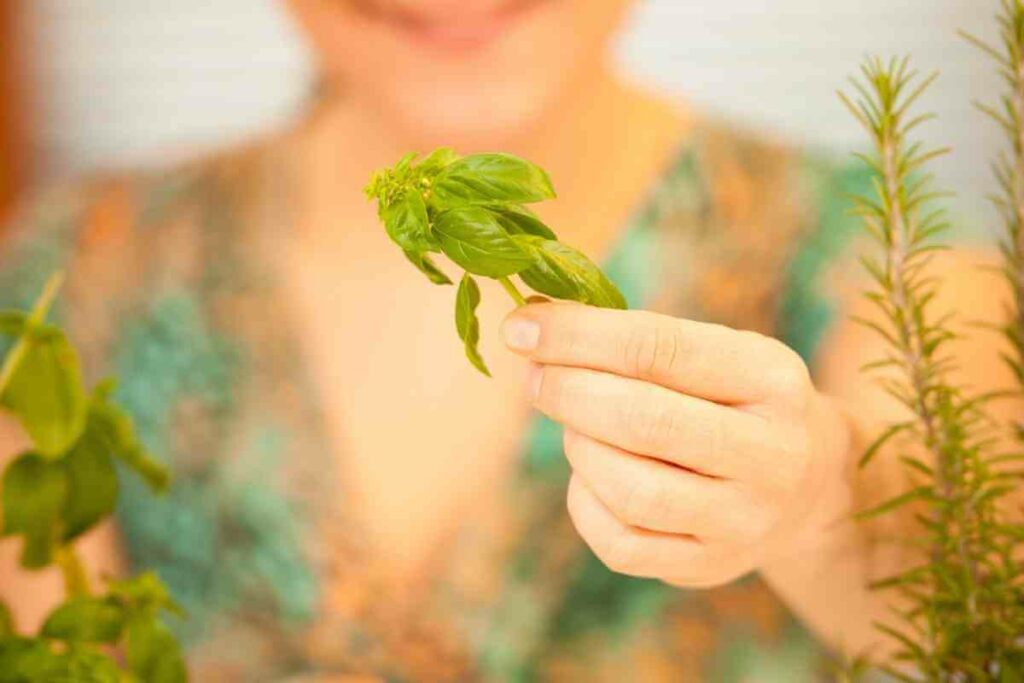
To maximize the flavor and yield of your herbs, follow these guidelines for harvesting, preserving, and utilizing them:
1. Harvesting
- Harvest herbs when they are dry, as they are rich in essential oils and most fragrant between mid-morning and early afternoon. This is when the oils are at their peak.
- Regularly harvest herbs during the growing season once the plants have enough foliage to maintain continued growth. Cut sprigs just above a leaf cluster or at the bottom of the stem, depending on the herb.
- Remove dead or damaged leaves and wipe off any dirt present on the leaves.
- Harvest herbs before they start flowering, as the flavor is typically more concentrated before flowering occurs.
- Avoid harvesting more than one-third of the plant at a time to ensure continuous growth.
2. Drying
Dry herbs in a warm, dust-free, and airy place out of direct sunlight. Spread the herbs in a single layer or tie them in small bundles and hang them upside down.
Smaller-leafed herbs like thyme, oregano, and rosemary may take around 6 days to dry completely, while larger-leafed herbs like basil and parsley can take up to 2 weeks.
Alternatively, you can use a food dehydrator set to a low temperature (around 100˚F) for quicker and more controlled drying.
Elite Gourmet Food Dehydrator
3. Freezing
Freezing is an excellent method for preserving the freshness of herbs. Wash and dry the herbs thoroughly, then chop or leave them whole.
Place the herbs in ice cube trays and cover them with water or olive oil. Once frozen, transfer the herb cubes to a sealed container or freezer bag.
Frozen herbs can be used directly in cooking or added to soups, stews, and sauces.
4. Storing
Store dried herbs in airtight containers, away from heat and sunlight. Use glass jars or resealable plastic bags and label them with the herb’s name and the date of drying.
Keep dried herbs whole until you are ready to use them. Crush or grind them just before adding them to your dishes to retain maximum flavor.
5. Creative Uses
Excess herbs can be used in various ways to enhance your culinary experience. Consider making herbal teas by steeping fresh or dried herbs in hot water.
Create infused oils by combining fresh herbs with a carrier oil like olive oil. Store the mixture in a cool, dark place for several weeks to infuse the flavors.
Make herb-infused vinegars by adding fresh herbs to a bottle of vinegar and allowing it to infuse for a few weeks. Strain the herbs before using the vinegar.
By following these guidelines for harvesting, preserving, and utilizing your herbs, you can enjoy their flavors and aromas even beyond the growing season.
Experiment with different preservation methods and creative uses to make the most of your herb harvest.
Culinary Delights with Fresh Herbs
Fresh herbs can elevate the flavors of your dishes and add a delightful aromatic touch.

Here are some simple and delicious recipes that showcase the versatility of selected herbs and provide tips for combining them to create unique flavor profiles:
- Basil
- Caprese Salad: Combine fresh basil leaves with ripe tomatoes, mozzarella cheese, and a drizzle of balsamic glaze for a classic and refreshing salad.
- Basil Pesto Pasta: Blend fresh basil, garlic, pine nuts, Parmesan cheese, and olive oil to create a vibrant and flavorful pesto sauce. Toss it with cooked pasta and top with grated Parmesan.
- Mint
- Watermelon Mint Salad: Combine diced watermelon, fresh mint leaves, feta cheese, and a squeeze of lime juice for a refreshing and summery salad.
- Minty Mojito: Muddle fresh mint leaves, lime wedges, and sugar in a glass. Add ice, white rum, and club soda for a refreshing cocktail.
- Dill
- Smoked Salmon and Dill Cream Cheese Bagel: Spread cream cheese on a toasted bagel, top with smoked salmon slices, and sprinkle with fresh dill for a delicious and flavorful breakfast or snack.
- Greek Tzatziki Sauce: Combine Greek yogurt, grated cucumber, minced garlic, lemon juice, and fresh dill to make a creamy and tangy sauce. Serve it with grilled meats or as a dip.
- Rosemary
- Lemon Rosemary Roasted Chicken: Rub chicken with a mixture of fresh rosemary, minced garlic, lemon zest, salt, and pepper. Roast it in the oven for a flavorful and aromatic main dish.
- Rosemary Roasted Potatoes: Toss baby potatoes with olive oil, chopped rosemary, garlic powder, salt, and pepper. Roast until crispy and golden brown for a delicious side dish.
- Thyme
- Tomato and Thyme Soup: Sauté onions, garlic, and fresh thyme in olive oil. Add diced tomatoes, vegetable broth, and simmer until the flavors meld together. Blend until smooth and serve with a drizzle of cream.
- Lemon Thyme Roasted Vegetables: Toss mixed vegetables such as carrots, zucchini, and bell peppers with olive oil, lemon zest, fresh thyme leaves, salt, and pepper. Roast until tender and caramelized.
These are just a few examples, and the possibilities with herbs are endless. Experiment with different combinations and let your taste buds guide you. Enjoy the flavors and aromas that fresh herbs bring to your meals!
Health Benefits of Homegrown Herbs

Homegrown herbs not only add flavor to our dishes but also offer various nutritional and medicinal properties.
Let’s explore the potential health benefits of herbs, along with specific herbs known for their medicinal properties and traditional uses.
However, please note that while herbs can have positive effects on health, it is important to consult with a healthcare professional before using them, especially if you are taking medications or have underlying health conditions.
Basil
Basil contains antioxidants that contribute to its taste and aroma. These antioxidants may help strengthen the immune system, reduce inflammation, and regulate various processes in the body. Additionally, basil is known for its traditional use in treating stomach woes and it is often used in Middle Eastern dishes and teas.
Sage
Sage has a long history of being used for its healing properties. It has been associated with potential improvements in brain function and memory, particularly in individuals with Alzheimer’s disease. Sage inhibits the breakdown of acetylcholine, a chemical messenger in the brain, which is linked to cognitive function.
Peppermint
Peppermint has a variety of health benefits. Peppermint oil has been shown to improve pain management in individuals with irritable bowel syndrome (IBS) by relaxing the smooth muscles in the colon and reducing abdominal bloating. Peppermint aromatherapy has also been found to help reduce nausea in various situations.
Turmeric
Turmeric contains curcumin, a compound with remarkable antioxidant and anti-inflammatory properties.
Curcumin’s antioxidant activity helps fight oxidative damage, and its anti-inflammatory effects can be beneficial in reducing chronic inflammation, which is associated with many diseases. Turmeric has been studied for its potential benefits in various health conditions.
Holy Basil
Holy basil, not to be confused with regular basil or Thai basil, has been used as a sacred herb in India. Studies suggest that holy basil may inhibit the growth of bacteria, yeasts, and molds.
It has also been linked to reduced blood sugar levels and potential benefits in treating anxiety and anxiety-related depression. However, more research is needed.
Cayenne Pepper
Cayenne pepper, known for its spiciness, contains capsaicin, which has been shown to reduce appetite and increase fat burning.
It is commonly used in commercial weight loss supplements. Additionally, some animal studies have indicated capsaicin’s potential in combating certain forms of cancer.
Ginger
Ginger has been used in alternative medicine for its various health benefits. It has been shown to be effective in treating nausea caused by morning sickness, chemotherapy, and sea sickness.
Ginger also possesses anti-inflammatory properties and can help with pain management. Research suggests its potential benefits in colon inflammation and osteoarthritis.
Fenugreek
Fenugreek has been used in Ayurvedic medicine and has shown beneficial effects on blood sugar levels.
It contains a plant protein called 4-hydroxyisoleucine, which can improve insulin function. Several studies have demonstrated that fenugreek extract can lower blood sugar levels, particularly in diabetics.
Rosemary
Rosemary contains rosmarinic acid, which has been shown to suppress allergic responses and nasal congestion. It has been studied for its potential benefits in alleviating allergy symptoms.
Incorporating these herbs into your diet can be a great way to enjoy their potential health benefits.
Frequently Asked Questions (FAQs)

Can I grow herbs indoors?
Ensure that the plants receive at least six hours of sunlight per day by placing them close to a bright window, preferably a south-facing window. If natural sunlight is insufficient, you can also consider using grow lights. Remember to repot the plants regularly to provide them with adequate space and nutrients.
What are the essential nutrients found in herbs?
Some common essential nutrients found in herbs include:
– Vitamins: Herbs can be a good source of vitamins such as vitamin C, vitamin A, vitamin K, and various B vitamins.
– Minerals: Herbs can provide minerals like calcium, iron, magnesium, and potassium.
– Antioxidants: Many herbs contain antioxidants, which are beneficial in neutralizing harmful free radicals in the body.
How do I harvest and store fresh herbs?
Here are some tips for harvesting and storing fresh herbs:
– Harvesting: Use kitchen shears or simply pinch off leaves as needed. Regular cutbacks encourage new growth, but avoid removing more than a quarter of the plant at a time to avoid distress.
– Storing: Rinse the herbs gently and pat them dry. You can store them in various ways:
– Refrigerator: Place the herbs in a damp paper towel or store them in a jar with water, loosely covered with a plastic bag, and keep them in the refrigerator. This method works well for delicate herbs like parsley and cilantro.
– Freezing: Herbs like basil and mint can be frozen by chopping them finely, placing them in ice cube trays with a little water or oil, and freezing. Once frozen, transfer the herb cubes to a freezer-safe container.
– Drying: Some herbs, such as rosemary and thyme, can be dried by hanging them upside down in a well-ventilated area until they become dry and brittle. Store the dried herbs in airtight containers away from direct sunlight.
What are some creative ways to use herbs in cooking?
Here are some creative ways to use herbs in cooking:
– Infused oils and vinegars: Add herbs like rosemary, thyme, or basil to olive oil or vinegar for a flavorful infusion.
– Herb butters: Mix finely chopped herbs into softened butter to create herb-infused spreads for bread, roasted vegetables, or grilled meat.
– Herbal teas and beverages: Use herbs like mint, chamomile, or lemongrass to brew refreshing herbal teas or create infused water with herbs and fruits.
– Herb rubs and marinades: Create flavorful rubs and marinades by combining herbs with spices, garlic, and citrus zest.
– Herb pesto: Blend herbs, garlic, nuts, olive oil, and cheese to make delicious pesto sauce for pasta, sandwiches, or as a dip.
Can herbs be used for medicinal purposes?
Conclusion
We have discussed the nutritional and medicinal properties of herbs and highlighted their potential health benefits. Homegrown herbs offer a range of advantages, from strengthening the immune system and reducing inflammation to improving brain function and memory. Specific herbs like basil, sage, peppermint, turmeric, holy basil, cayenne pepper, ginger, fenugreek, and rosemary have been recognized for their medicinal properties and traditional uses.
In light of the numerous health benefits and versatility of herbs, we encourage our readers to start their own herb gardens and enjoy the benefits of fresh, homegrown herbs. Whether it’s a small herb pot on a windowsill or a larger garden, growing herbs at home allows you to have a readily available supply of these nutritious and medicinal plants.
By incorporating homegrown herbs into your daily life, you can enhance the flavors of your dishes while reaping the nutritional and health benefits they offer. Start your herb garden today and embark on a journey of fresh, sustainable, and healthy living.
We hope you enjoyed this article , Happy Planting.



